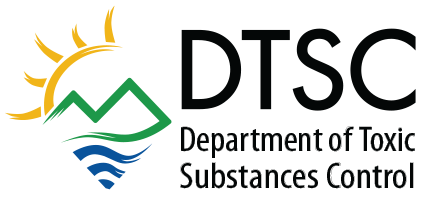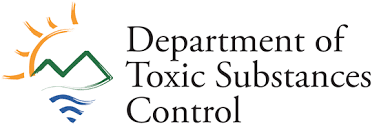Permit By Rule
Generator Requirements
Hazardous Waste Determination
Generators are required to classify their solid wastes as soon as they are subject to regulation in order to ensure that hazardous wastes will always be safely managed. California Code of Regulations, title 22, chapter 11 addresses the identification of hazardous wastes. To determine if a waste is a hazardous waste, you need to know its physical and chemical nature. It is necessary to know all chemical components that make up the specific waste. Material Safety Data Sheets (MSDS) may tell you something about the properties and constituents of your waste. Without this type of information, you may have to test each waste to determine if it is hazardous waste.
DTSC Guidance
- Defining Hazardous Waste
- Cyanide Waste Produced in Jewelry Manufacturing
- Wastewater Produced in Jewelry Manufacturing
- Hazardous Waste Generator Requirements
- Accumulating Hazardous Wastes at Generator Sites
- Hazardous Waste Accumulation Time for Generators
- EPA ID Numbers for Generators
Other Guidance
- San Diego County Web page on Hazardous Waste Management
- San Diego County Publications on Hazardous Waste
- San Diego County Hazardous Waste Determination
Regulations
- California Code of Regulations, title 22, chapter 11 (Hazardous Waste Requirements)
- California Code of Regulations, title 22, chapter 12 (Generator Requirements)
Permit By Rule Program
Program Description
The Permit by Rule process allows generators of hazardous waste to treat certain wastes without having to go through the formal permitting process. Permit by Rule Permit treatment must be done in tanks or containers. Furthermore, the treatment and waste streams must be eligible for Permit by Rule. See Permit by Rule Fact Sheet for more details. If the treatment and the waste stream are not specifically allowed under Permit by Rule, another form of authorization will be necessary.
Who May Apply
Generators wanting to treat their own hazardous wastes on site before shipping the waste off site for continued treatment, storage or disposal may utilize this Permit by Rule.
Who Administers Permit by Rule?
The Certified Unified Program Agency (CUPA) is responsible for reviewing notification forms for businesses located within its jurisdiction. A list of CUPA addresses and phone numbers is available on the California CUPA Web site and on the CalEPA Web site.
Application Process
Generators must submit the completed required notification forms to the local CUPA by certified mail or in person a minimum of 60 days before beginning the first waste treatment. An annual Permit by Rule notification must also be submitted by March 1st each year.
Notification Forms
The required forms are available from your local CUPA, DTSC, or CERS Central website. (Updated July 2017)
- Business Activities page;
- Business Owner/Operator/Identification page;
- Onsite Hazardous Waste Treatment Notification
Additional Certifications and Information Required for Applying
- Certification specifying the local authorities (POTWs) have been notified;
- Treatment facility information;
- Documentation that the property owner has been notified;
- Financial assurance certifications;
- Business disclosure statement; and
- Phase I environmental assessment.
Duration of Permit by Rule
The Permit by Rule remains effective until the process that generates the waste changes or the treatment process changes.
Fees
The fees associated with this Permit by Rule are billed annually by the local CUPA if you operate during any part of a calendar year.
Fact Sheets
- Fixed Treatment Unit Operating Under Permit By Rule
- Transportable Treatment Unit Operating Under Permit by Rule
Regulations
The fees associated with this Permit by Rule are billed annually by the local CUPA if you operate during any part of a calendar year.
Other Regulatory Issues
Recycling
Unless otherwise subject to special requirements, generators of recyclable materials that are solid and hazardous wastes are subject to the same regulations as other generators of hazardous waste. The recycling exemption applies to the recycling unit itself, not the waste in it. Therefore, if the waste is stored prior to recycling, all applicable storage requirements and quantity limitations apply. If the waste is hazardous waste before it is put into the recycling unit, it is hazardous waste while it’s in the unit. Whether it is hazardous waste after recycling depends on the unit and the waste. For example, anode bags may no longer be hazardous wastes after recycling, but the wastewater generated during rinsing may be. Exemptions for hazardous waste treatment permits for recycling of hazardous waste are included in the specific requirements for recyclable materials outlined in Health and Safety Code, section 25143.2.
Note: The Permit by Rule regulations do not affect any recycling exemptions that exist in law or regulations.
Land Disposal Restrictions
Land disposal restrictions (LDR) apply additional limits to the ways in which waste may be managed, it is necessary to immediately determine if a hazardous waste is subject to LDR. Generators must, therefore, fully characterize their wastes at the point of generation to determine if their hazardous waste is subject to LDR. The LDRs require that a hazardous waste must be treated or meet specified levels for hazardous constituents before being disposed of on the land. This is called the disposal prohibition. Instead of requiring barriers to separate hazardous contaminants from groundwater like much of the other environmental requirements, LDR requires that hazardous wastes undergo fundamental physical or chemical changes so that they pose less of a threat to groundwater.
Waste Analysis Plan
Generators that treat their hazardous waste using a Permit by Rule are required to have a written waste analysis plan. The waste analysis plan is used to document the procedures used to obtain representative samples and to conduct detailed chemical and physical analysis of the samples. It is also used to document any special handling procedures for the waste and must contain all information necessary for proper treatment of the waste in accordance with the requirements of the Land Disposal Restrictions. Development of the waste analysis plan allows the generator to analyze different treatment options, provides for reliable waste identification, promotes consistency in waste analysis, treatment, and disposal independent of changes in personnel, ensures adequate personnel training, provides for appropriate spill response, ensures waste compatibility with treatment, and demonstrates compliance with hazardous waste requirements.
Generators must develop and implement a written waste analysis plan that includes detailed chemical and physical analyses of the waste and thoroughly describes the procedures that will be used during treatment, including any testing that may be necessary to demonstrate that the desired treatment goals have been achieved. The plan must ensure adequate personnel training, provide for appropriate spill response, ensure waste compatibility with the selected treatment process and demonstrate compliance with hazardous waste requirements. This plan should be retained in the generator’s operating records.
Waste Analysis Plan Guidance
Tank Certifications
Hazardous waste tank systems used for the treatment of aqueous cyanide waste authorized by Permit by Rule are required to be assessed and certified by a professional engineer. (California Code of Regulations, title 22, sections 66265.191, and 66265.192, and subsection 67450.3(c)(9)(F))
Tank Guidance
Permitting Links
- Permitting Home
- Community Information
- Commonly Referenced Regulations
- Community Protection (SB 673)
- Contact Info
- Managing Hazardous Waste
- Who Needs a Hazardous Waste Facility Permit?
- Permit Appeals
- List of Permitted Hazardous Waste Facilities in California
- The Permitting Process & Climate Change
- Additional Permitting Information and Resources
Hazardous Waste Links
- Hazardous Waste Home
- Certified Appliance Recycler (CAR) Program
- CUPAs
- Defining Hazardous Waste
- Electronic Waste (E-Waste)
- Enforcement and Emergency Response Division
- Facilities (TSDFs)
- Generator Improvements Rule
- Generators
- Hazardous Waste ID Numbers
- Hazardous Waste Management Plan
- Hazardous Waste Manifests
- Hazardous Waste Tracking System
- Household Hazardous Waste
- Metal Recycling
- Metal Shredding Facilities and Wastes
- Permitting
- Toxics in Products
- Transporters
- Universal Waste
- Form 1358
- California Hazardous Waste Codes
Hazardous Waste Related Links
- Annual/Biennial Reports
- Annual Fee Summary
- Customer Billing Portal (Cost Recovery)
- DTSC Advisory on the Management of Spent Fuels
- EnviroStor
- Hazardous Waste Publications
- Find a Registered Hazardous Waste Transporter
- Hazardous Waste Policies & Procedures
- Hazardous Waste Project Documents
- Imports and Exports of Hazardous Waste
- Kettleman Hills Facility
- Land Use Restriction Sites
- Office of Criminal Investigations
- PV Modules (Solar Panels)
- Regulatory Assistance Office
- Report an Environmental Concern
- Retail Waste

